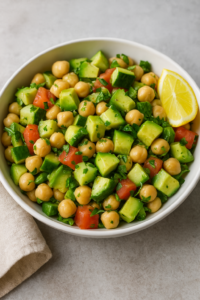
Diabetes, particularly type 2 diabetes, is a chronic condition characterized by high blood sugar levels due to insulin resistance or deficiency. While it is commonly managed through medication, lifestyle changes, and diet, recent research suggests that certain foods can significantly impact blood sugar control and may even contribute to reversing diabetes permanently. This article explores these powerful foods and how they can be incorporated into your diet to help manage and potentially reverse diabetes.
Check out these related articles, too:
What You Should Look Out For For Kidney Failure Symptoms?
Kidney Failure Treatment Without Dialysis
Kidney Diet Secrets That Can Reverse Chronic Kidney Failure
The Effects of High Potassium For Kidney
What Is A Healthy Kidney Diet Plan
Diet Tips For People With Diabetes and Kidney Disease
Are Renal Insufficiency And Kidney Failure The Same Thing
5 Natural Supplements For Chronic Kidney Disease
Bitter Melon Recipe For Diabetes
Understanding Diabetes and Diet
Before diving into specific foods, it's essential to understand how diet affects diabetes. The goal is to maintain stable blood sugar levels, improve insulin sensitivity, and reduce inflammation. A balanced diet rich in nutrients, low in processed foods, and moderate in carbohydrates can help achieve these goals.
Top Foods to Help Reverse Diabetes
1. Leafy Greens
Why They Help: Leafy greens such as spinach, kale, and Swiss chard are low in calories and carbohydrates, making them an ideal food for managing blood sugar levels. They are also rich in fiber, vitamins, and minerals, which are essential for overall health.
How to Incorporate:
- Add spinach or kale to smoothies.
- Use leafy greens as a base for salads.
- Sauté Swiss chard with garlic and olive oil as a side dish.
2. Berries
Why They Help: Berries, including blueberries, strawberries, and raspberries, are packed with antioxidants, vitamins, and fiber. They have a low glycemic index, which means they have a minimal impact on blood sugar levels.
How to Incorporate:
- Add berries to oatmeal or yogurt.
- Blend them into smoothies.
- Enjoy as a snack or dessert.
3. Fatty Fish
Why They Help: Fatty fish like salmon, mackerel, and sardines are high in omega-3 fatty acids, which have anti-inflammatory properties and can improve insulin sensitivity. They are also a great source of protein, which helps keep you full and satisfied.
How to Incorporate:
- Grill or bake salmon for dinner.
- Add sardines to salads or eat with whole-grain crackers.
- Include mackerel in sandwiches or wraps.
4. Whole Grains
Why They Help: Whole grains such as quinoa, brown rice, and oatmeal are rich in fiber and nutrients. They help regulate blood sugar levels by slowing down the absorption of carbohydrates.
How to Incorporate:
- Use quinoa as a base for salads.
- Replace white rice with brown rice.
- Enjoy oatmeal for breakfast with added nuts and berries.
5. Nuts and Seeds
Why They Help: Nuts and seeds are excellent sources of healthy fats, protein, and fiber. They help improve insulin sensitivity and reduce inflammation.
How to Incorporate:
- Snack on a handful of almonds or walnuts.
- Add chia seeds or flaxseeds to smoothies and yogurt.
- Use nut butters as spreads or in sauces.
6. Legumes
Why They Help: Beans, lentils, and chickpeas are high in fiber and protein, which help manage blood sugar levels and keep you full longer. They also have a low glycemic index.
How to Incorporate:
- Add beans to soups, stews, and salads.
- Use lentils in curries and casseroles.
- Make hummus from chickpeas as a healthy dip.
7. Non-Starchy Vegetables
Why They Help: Vegetables like broccoli, cauliflower, bell peppers, and zucchini are low in calories and carbohydrates but high in fiber and essential nutrients. They help regulate blood sugar levels and provide a feeling of fullness.
How to Incorporate:
- Roast or steam vegetables as side dishes.
- Include them in stir-fries and casseroles.
- Snack on raw vegetables with healthy dips.
Tips for a Diabetes-Friendly Diet
1. Control Portion Sizes
Eating the right portions is crucial in managing blood sugar levels. Use smaller plates, and be mindful of serving sizes, especially for carbohydrates.
2. Stay Hydrated
Drink plenty of water throughout the day. Avoid sugary drinks and opt for herbal teas or water infused with fruits and herbs.
3. Limit Processed Foods
Processed foods often contain high levels of sugar, unhealthy fats, and additives. Focus on whole, unprocessed foods for better blood sugar control.
4. Monitor Blood Sugar Levels
Regularly checking your blood sugar levels helps you understand how different foods affect you and allows you to make necessary dietary adjustments.
5. Balance Macronutrients
Ensure each meal contains a good balance of carbohydrates, proteins, and healthy fats to maintain stable blood sugar levels.
Conclusion
While there is no one-size-fits-all approach to reversing diabetes, incorporating these nutrient-rich foods into your diet can significantly impact your blood sugar control and overall health. Along with regular exercise and healthy lifestyle choices, these dietary changes can help manage and potentially reverse diabetes permanently. Always consult with a healthcare provider or dietitian before making significant changes to your diet, especially if you have diabetes or other health conditions.



 Protected by Patchstack
Protected by Patchstack